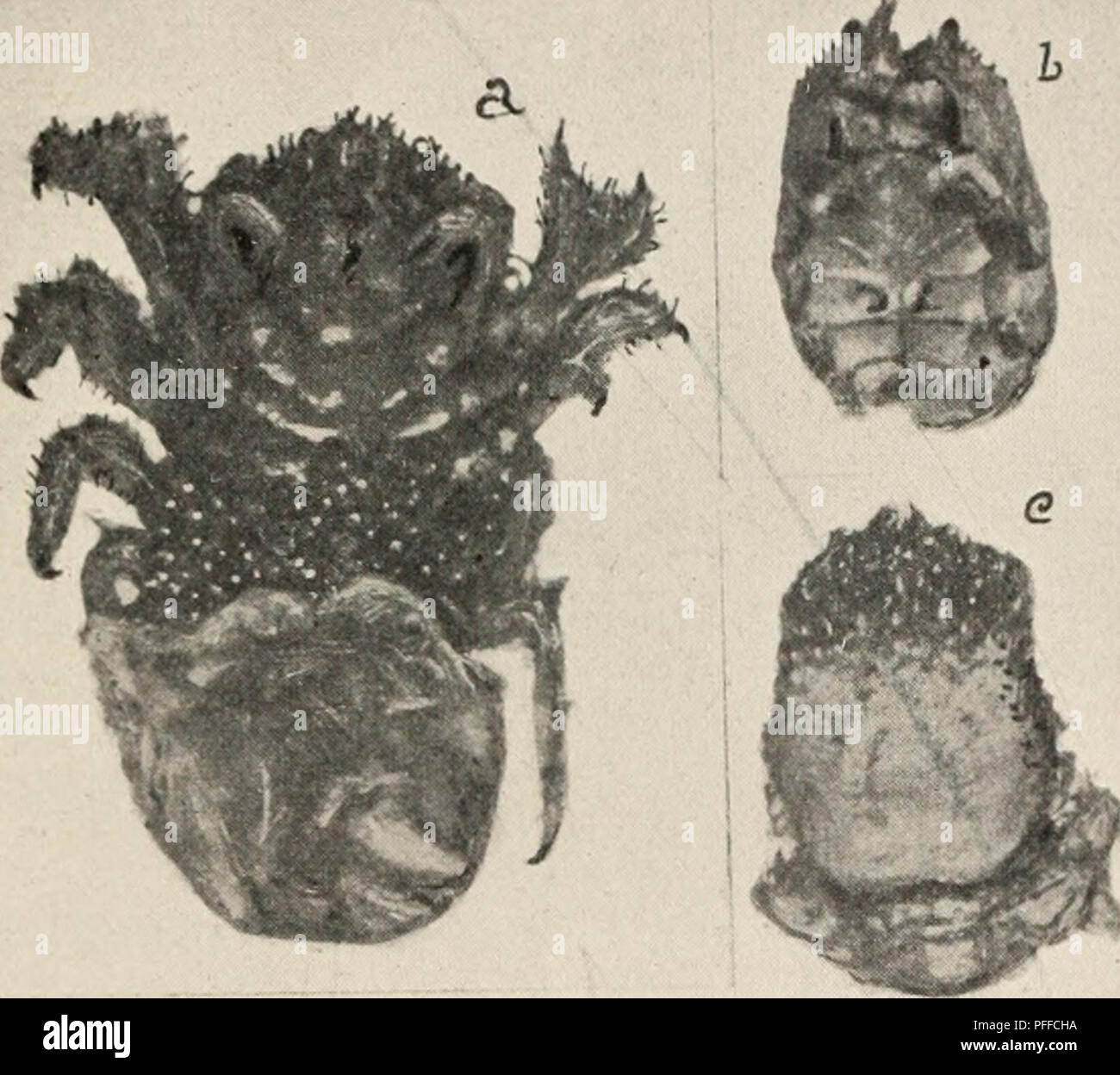. Decapod crustacea of Bermuda. Decapoda (Crustacea) -- Bermuda Islands. A. E. Verrill—Decapod Crustacea of Bermuda. I-.", i It appears to be nearly allied to Ilapalocarcinus marsupialis StimIP- SOU,* which forms curious "houses" among the branches of Pocillo- pora ewspitosa. The branches of the coral, in the latter case, grow up around the crab and enclose it, leaving several small apertures for the entrance of water and food, but from which the crab cannot emerge. In the latter, however, the front of the carapace is flat, not bent downward, and it does not serve for an opercul

Image details
Contributor:
Central Historic Books / Alamy Stock PhotoImage ID:
PFFCHAFile size:
7.1 MB (327.8 KB Compressed download)Releases:
Model - no | Property - noDo I need a release?Dimensions:
1674 x 1492 px | 28.3 x 25.3 cm | 11.2 x 9.9 inches | 150dpiMore information:
This image is a public domain image, which means either that copyright has expired in the image or the copyright holder has waived their copyright. Alamy charges you a fee for access to the high resolution copy of the image.
This image could have imperfections as it’s either historical or reportage.
. Decapod crustacea of Bermuda. Decapoda (Crustacea) -- Bermuda Islands. A. E. Verrill—Decapod Crustacea of Bermuda. I-.", i It appears to be nearly allied to Ilapalocarcinus marsupialis StimIP- SOU, * which forms curious "houses" among the branches of Pocillo- pora ewspitosa. The branches of the coral, in the latter case, grow up around the crab and enclose it, leaving several small apertures for the entrance of water and food, but from which the crab cannot emerge. In the latter, however, the front of the carapace is flat, not bent downward, and it does not serve for an operculum, which is not needed in its case. 49. Figure 49.—Troglocarcinus corallicola ; a, dorsal view, x about 4 times, of a ? removed from its den in a coral (Mussa), from Dominical.; b, a smaller 2 specimen, x about 4 times, ventral view ; the abdomen, legs, outer max- illipeds, and anteunules are removed, except one basal antennular segment; c, the same, another 2 example ; dorsal view, x 4. Phot. A. H. V. ( It is, perhaps, more closely allied to Cryptochirus coralliodytes Heller, f from the Red Sea and Maldives, which lives in the same manner, in dens in Leptoria ( = Mceandr<i). The latter, however, has a differently formed carapace, smooth, convex in front, without marginal spines ; orbits simple, without spines ; and very different maxillipeds. * Proc. Boston Soc. Nat. Hist., vol. vi, p. 412, 1859. Caiman, Trans. Linn. Soc. London, ser. 2, vol. viii, p. 43, pi. iii, figs. 29-40, 1900. M. J. Eathbun, Crust. Hawaiian Is., U. S. Fish Com. Bulletin, for 1903, part iii, p. 892, 1906. f Heller, Cam., Sitzungsb. Math.-Naturwiss. Classe. Akad. Wissenschaften, Wien, xliii, i, 1861, p. 366, pi. iv, figs. 33-39.. Please note that these images are extracted from scanned page images that may have been digitally enhanced for readability - coloration and appearance of these illustrations may not perfectly resemble the original work.. Verrill, A. E. (Addison Emery), 1839-1926. New Haven,